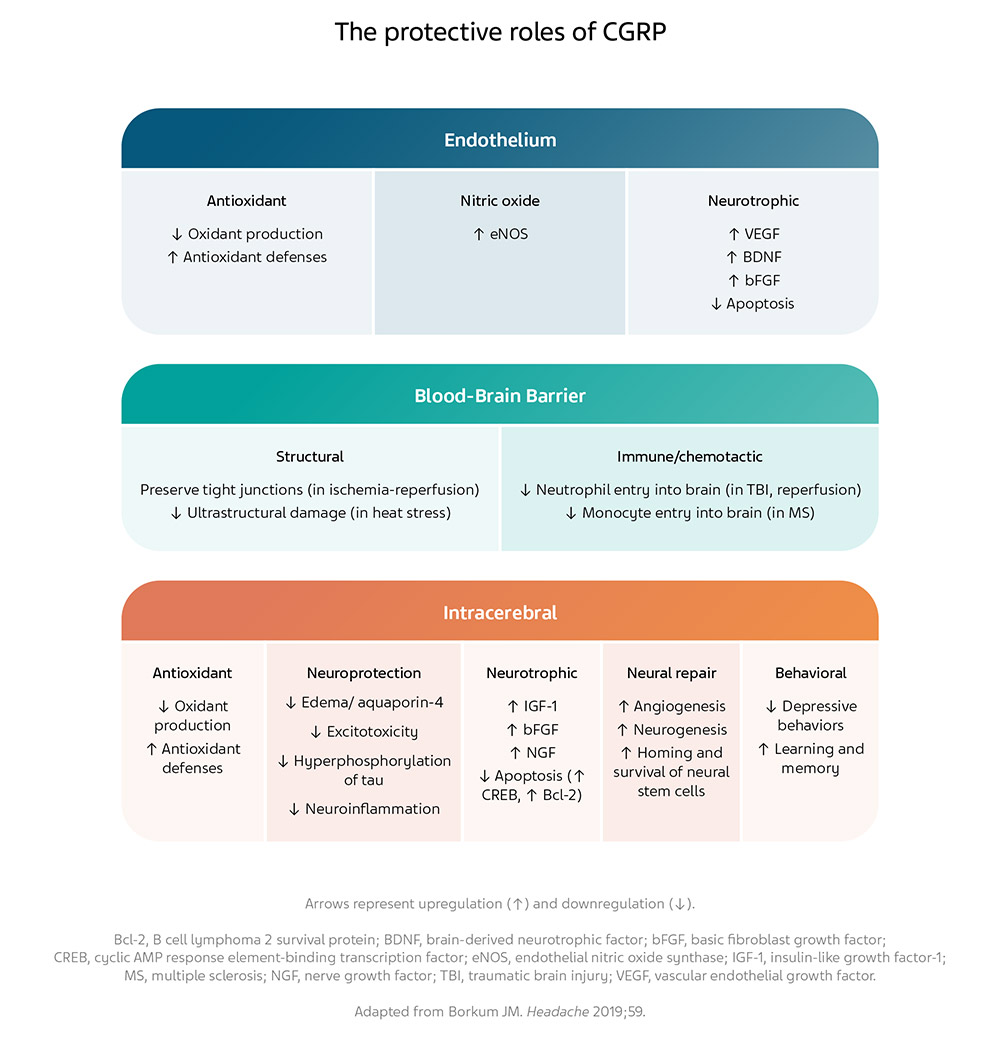
PUBLICATION PULSE: How does CGRP work inside and outside of the brain?
Borkum JM. CGRP and Brain Functioning: Cautions for Migraine Treatment. Headache 2019;59.
![]()
The lead-up
Calcitonin gene-related peptide (CGRP) is a 37-amino acid neuropeptide that is widely located in the nervous system.1 The peptide is heavily implicated in the pathophysiology of migraine and has, in turn, become an important therapeutic target for treatment of the disease.1,2 Two categories of migraine treatment that block the CGRP pathway have emerged: monoclonal antibodies (mAb) targeting CGRP or its receptor, and small molecule CGRP receptor antagonists, or gepants.3 In order to monitor the long-term safety of these drugs, it is helpful to understand the role of CGRP in brain functioning, which is the focus of this 2019 review by J.M. Borkum.
![]()
The approach
In this qualitative review, preclinical literature on CGRP and its role in brain physiology and pathophysiology was summarized and used to draw conclusions. The author notes that, apart from the possibility of ischemic stroke from impaired vasodilation, the potential risks to the brain from CGRP antagonists have not been well reviewed. Consequently, a number of such risks are reviewed and existing knowledge about the functions of CGRP in the nervous system is considered.

![]()
The findings
CGRP acts on both sides of the blood-brain barrier (BBB), both peripherally and centrally in the brain; however, it is not yet known whether the intracerebral and extracerebral functions of CGRP interact or affect each other. In the brain, CGRP is thought to protect neurons by buffering intracellular calcium to prevent excitotoxicity, apoptosis and lysis. CGRP also seems to trigger an array of other neuroprotective processes. It promotes antiapoptotic signaling, upregulates neurotrophins, reduces brain edema, and strengthens the BBB. Outside of the BBB, CGRP is thought to act as a defense against ischemia, support antioxidant defense, protect the immune privilege of the brain, and play some role in cognition and information processing.

![]()
The scrutiny
The risks that could arise as a result of disrupting the processes described above are purely theoretical and depend on the unknown extent of compensating mechanisms. Additionally, the effects of intracerebral CGRP may not be relevant in migraine; CGRP is not thought to cross the BBB, and the peptide’s release during a migraine headache may not lead to it entering the brain. However, these effects may be relevant to some small molecule CGRP blockers that do cross the BBB.

![]()
The bottom line
Within the brain, CGRP is upregulated by physiological threats and, as such, activates a wide range of neuroprotective processes. Outside the BBB, CGRP protects the endothelium and the immune privilege of the brain, and may be involved in some other processes.
Karsan N, Goadsby PJ. Calcitonin gene-related peptide and migraine. Curr Opin Neurol 2015;28:250–4.
Charles A. The pathophysiology of migraine: Implications for clinical management. Lancet Neurol 2018;17:174-82.
Maasumi K, Michael RL, Rapoport AM. CGRP and Migraine: The Role of Blocking Calcitonin Gene-Related Peptide Ligand and Receptor in the Management of Migraine. Drugs 2018;78:913–28.